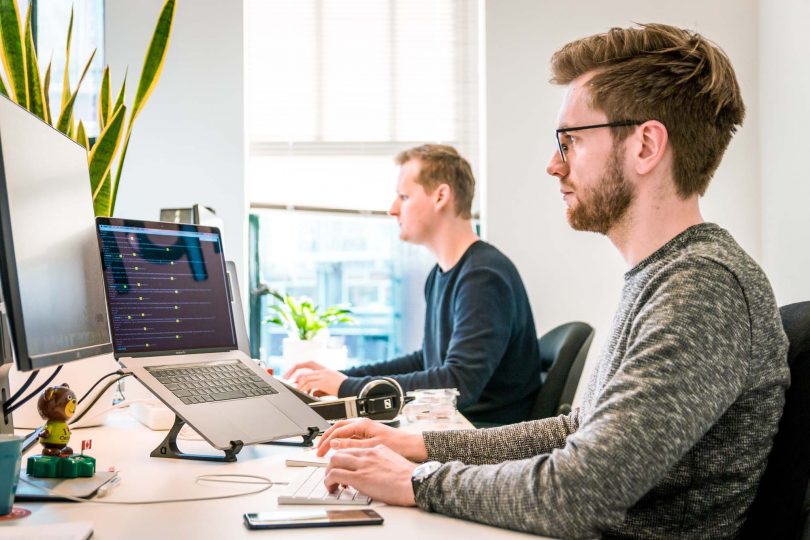Sitting has been called ‘the new smoking’. Smart watches and other wearable tech tell us when to get up and move. Sit-to-stand desks, treadmill desks and even cycling desks have all come on the market. What’s the relevance of all of this and should people who must sit for much of their workday be concerned?
The Risks of excessive sitting

There have been lots of studies done in this area and yes, there does seem to be something to it: High amounts of sitting may be harmful to health. Studies have found correlations between high levels of sitting and increased rates of dying from cardiovascular causes and cancer, as well as from all causes combined. Most notable is a greatly increased risk of developing type 2 diabetes (around a 100% increased risk). This makes sense, in that exercise is a recommended approach to both prevent and treat diabetes, hence a lack of movement appears to greatly increase the risk of occurrence. Sitting a lot is also likely to contribute to musculoskeletal problems, like back pain, which interfere with work performance and also increase the risk of injury.
Is sitting really as dangerous as smoking?
In short, no: Increased rates of dying from high sitting levels have typically been between 15 and 50%. By contrast, smoking comes with a 180% increase in risk of dying from all causes. In different terms, smoking is implicated in 1,500 deaths per 100,000 people per year, while approximately 160 deaths per 100,000 people per year are attributed to high levels of sitting (one-ninth as many as smoking). So although the risks associated with sitting are not trivial, the two are not on the same scale.
What if you must sit a lot?
However, some jobs may require that you sit for all or most of your workday. In that case you may be interested in knowing how best to overcome the effects of lots of hours spent sitting. Here are a few approaches that you can take:
Exercise…
compensates for at least some of the negative effects of sitting. If you have to sit a lot for work, then it becomes even more important to get in the recommended minimum amounts of weekly exercise (150 minutes of moderate, or 75 minutes of vigorous activity per week, plus muscle strengthening exercises twice a week). If you have to sit for seven or more hours per day however, it’s probably wise to get more exercise than the minimum levels. Some studies have found that it took roughly an hour per day of exercise to undo the effects of high levels of sitting.
Sit less during work…
if your work allows. Rather than relying on exercise alone, a smart approach is to replace some sitting time with time spent standing or moving around. This helps because it’s much easier to reduce sitting time through standing more than through exercising more. For example, it’s easy enough to stand for two hours or more over the course of the day, which is longer than most of us can (or should) exercise for. Try making or taking calls while standing, standing to read documents, or holding walking meetings with colleagues. You could also set a reminder to get up and move for a few minutes every hour or two, but obviously you don’t want to lose a lot of productive time hence the value of working while standing or moving.
Find ways to move outside of work…
Another approach would be to spend more time either standing or in activities that involve movement while outside of work. Particularly if you have to sit for much of the day, it’s worth trying to find ways to stand or move in the rest of your day. Here, like at work, you could try standing up while talking on the phone, while reading, or during conversations at home. Active commuting is a great option if it’s practical.
If you use public transport, try getting off the bus or train one or two stops early and walking to your destination. Over the course of a week, this adds up to a lot of extra movement. In terms of benefits, every half hour spent standing or in light activity was found to reduce the odds of common health risks – like low HDL (“good”) cholesterol – by around 12%, as well as reducing the risk of diabetes by 33%. These are outcomes worth having.
Stretch yourself…
Sitting is likely to contribute to musculoskeletal problems because some muscle groups are held in shortened positions for long periods. This tends to cause these muscle groups to become shorter and restricted in their movement. This is called ‘passive shortening’. The solution is generally to stretch the affected muscles which, over time, restores their proper length.
Knowing which muscles to stretch is best based on the advice of a personal trainer, physiotherapist, or other health professional, based on your posture, movement, or specific symptoms. However the lower back, hamstrings and hip flexor muscles are all likely to benefit from regular stretching in people who sit at work. Stretching should be done at least twice per week after exercise and takes some time to show progress, so allow four to six weeks to see improvements.
In a nutshell.
Bear in mind that 30 minutes of moderate or vigorous exercise every day is only 1/33 or roughly 3% of a 16-hour day. While it’s massively beneficial for health reasons to allocate this time to exercise, it’s also quite a small portion of the day. It’s probably not wise to sit for the rest of the day and this is what the research on sitting seems to show. As well as exercising, spending a couple of hours per day in standing or light activity seems to greatly reduce the risk of lots of sitting.




